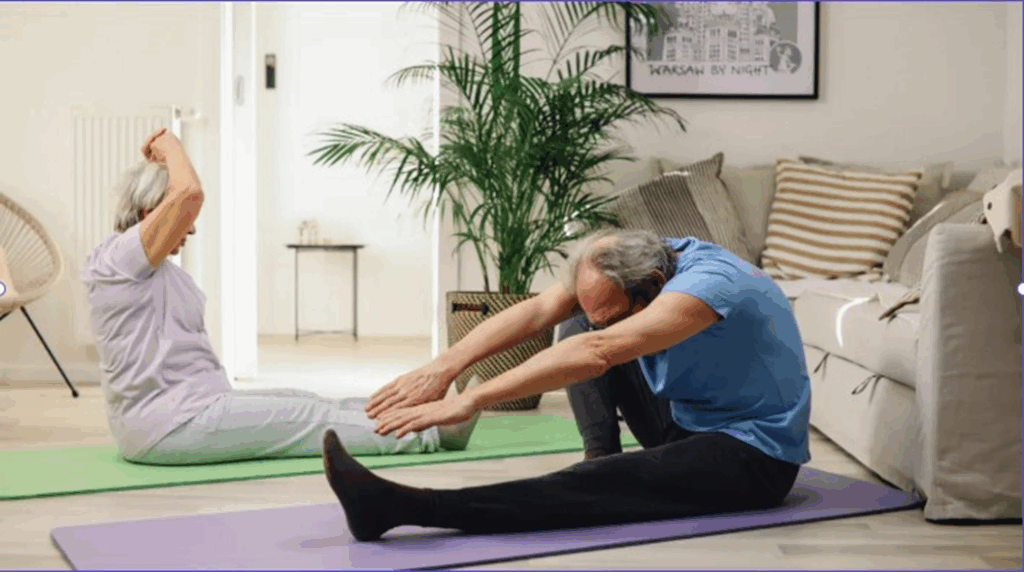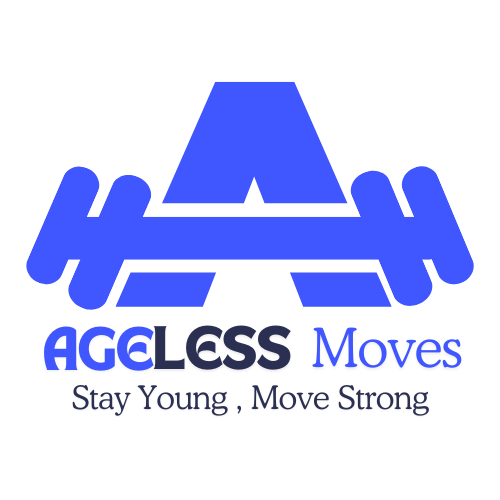Arthritis can make movement feel difficult, but exploring the benefits of chair exercises for arthritis relief provides a gentle and effective way to ease discomfort. This specific exercise type focuses on simple, accessible movements that help reduce stiffness and improve flexibility. Best of all, it’s safe and easy to practice right from the comfort of your home. Why not give it a try?

The Benefits of Chair Yoga for Arthritis Relief
Reducing Joint Stiffness
Arthritis can make your joints feel tight and sore. Chair yoga uses gentle moves to improve blood flow and ease stiffness. Research shows yoga helps people with arthritis feel better. Here are some study results:
| Study Topic | Results |
| Knee Arthritis | Less pain and better joint movement after 8 weeks. |
| Hand Arthritis | Reduced pain, swelling, and better finger movement. |
| Rheumatoid Arthritis | Women felt improvements after 6 weeks of yoga. |
| Intensive Yoga Program | Lower disability scores and rheumatoid levels were seen. |
These studies show chair yoga helps reduce stiffness and improve movement.
Improving Flexibility and Range of Motion
Arthritis can make it hard to stretch or move joints. Chair yoga gently helps you move better over time. Poses like seated stretches or twists make your body more flexible. This exercise is easy and doesn’t cause pain, making it great for beginners.
Promoting Relaxation and Stress Reduction
Arthritis can be stressful, but chair yoga helps you relax. Slow movements and breathing exercises calm your body and mind. Many people say chair yoga lowers stress and helps with pain.
- People felt less stressed after doing chair yoga.
- Breathing exercises stopped anxiety for some individuals.
- Yoga gave a natural way to handle pain and stress.
Adding these practices can help you feel peaceful and in control daily.

Preparing for Your Chair Yoga Practice
Getting ready for chair yoga is just as important as the practice itself. A little preparation can make your session safer and more enjoyable. Here’s how you can set yourself up for success.
Selecting the Right Chair
The chair you choose matters. Look for one that’s sturdy and doesn’t wobble. Chairs with a flat seat and no armrests work best because they give you more room to move. Make sure the chair is at a height where your feet can rest flat on the floor. If your feet don’t reach, use a yoga block or a thick book for support.
Tip: Avoid chairs with wheels or slippery surfaces. Stability is key for safe movements.
Creating a Comfortable Practice Space
Your space should feel calm and inviting. Pick a quiet spot where you won’t be interrupted. Keep the area free of clutter to avoid distractions or accidents. Adding a yoga mat under your chair can prevent slipping and provide extra comfort.
Here’s a quick checklist to help you prepare:
- Choose a quiet corner or room.
- Remove any obstacles around your chair.
- Use a yoga mat or rug for stability.
- Keep a water bottle nearby to stay hydrated.
Choosing Appropriate Clothing
Wear clothes that let you move freely. Loose-fitting tops and stretchy pants work well. Avoid anything too tight or restrictive. Shoes aren’t necessary for chair yoga, but if you prefer wearing them, pick ones with flat soles.
Note: Layers can be helpful. You might warm up during your session, so having a light jacket or sweater you can remove is a good idea.
By following these steps, you’ll create a safe and comfortable environment for your chair yoga practice.
Step-by-Step Chair Yoga Poses for Arthritis Relief
Sitting Mountain Pose
This pose is the foundation of your chair yoga practice. It helps you align your body and focus on your breathing. To start:
- Sit tall on your chair with your feet flat on the floor.
- Place your hands on your thighs or let them rest by your sides.
- Keep your back straight and shoulders relaxed.
- Take slow, deep breaths, feeling your chest rise and fall.
This simple pose improves posture and helps you feel grounded. It’s a great way to begin your session and connect with your body.

Seated Cat-Cow Stretch
The Seated Cat-Cow Stretch is perfect for loosening up your spine and reducing stiffness. Here’s how to do it:
- Sit on the edge of your chair with your feet flat on the ground.
- Place your hands on your knees.
- Inhale as you arch your back, lifting your chest and looking up (Cow Pose).
- Exhale as you round your back, tucking your chin to your chest (Cat Pose).
Repeat this movement 5-10 times, moving with your breath. This stretch can ease tension in your back and improve flexibility.
Seated Forward Bend
This pose gently stretches your back, hips, and legs. It’s especially helpful for relieving tightness in the lower body. Follow these steps:
- Sit on your chair with your feet hip-width apart.
- Inhale and lengthen your spine.
- Exhale as you slowly fold forward, letting your hands reach toward the floor.
- Hold the position for a few breaths, then slowly return to sitting.
You don’t need to touch the floor—just go as far as feels comfortable. This pose encourages relaxation and improves flexibility.
Seated Side Stretch
The Seated Side Stretch targets the sides of your torso, helping to release tension and improve mobility. To practice this pose:
- Sit tall with your feet flat on the floor.
- Raise your right arm overhead and lean gently to the left.
- Hold for a few breaths, feeling the stretch along your right side.
- Return to center and repeat on the other side.
This stretch is simple yet effective for improving your range of motion.
Seated Spinal Twist
The Seated Spinal Twist is a fantastic pose for relieving pain and improving flexibility. It’s especially beneficial for arthritis in the back, knees, and fingers. Here’s how to do it:
- Sit on your chair with your feet flat on the floor.
- Cross your right leg over your left.
- Place your left hand on your right knee and your right hand on the back of the chair.
- Inhale and lengthen your spine.
- Exhale as you twist your torso to the right, looking over your shoulder.
Hold the twist for a few breaths, then switch sides. This pose not only improves posture but also enhances overall comfort.
Did you know? Studies show that the Seated Spinal Twist can relieve arthritis pain in multiple areas, including the back and knees. It’s a safe and effective way to enhance flexibility and posture.
Seated Leg Extensions
Seated Leg Extensions are great for improving joint mobility and strengthening your legs. To perform this exercise:
- Sit tall with your feet flat on the floor.
- Extend your right leg straight out, keeping your foot flexed.
- Hold for a moment, then lower your leg back down.
- Repeat with your left leg.
Do 8-10 repetitions on each side. This movement can help reduce pain and improve functional performance, as shown by metrics like the Visual Analog Scale (VAS) and WOMAC index.
Seated Ankle Rolls
Ankle rolls are a simple yet effective way to improve circulation and reduce stiffness in your feet and ankles. Here’s how to do them:
- Sit with your feet flat on the floor.
- Lift your right foot slightly off the ground.
- Rotate your ankle in a circular motion, first clockwise, then counterclockwise.
- Repeat with your left foot.
This exercise is a gentle way to keep your joints moving and prevent stiffness.
Tips for Practicing Chair Yoga Safely
Listening to Your Body
Pay attention to how your body feels during chair yoga. If a pose hurts or feels wrong, stop doing it. Try changing the pose or pick a gentler one instead. For example, if your knees feel sore, move your legs differently or skip that pose.
- Begin with easy moves that don’t hurt your joints.
- Notice how your body reacts and adjust poses as needed.
- Stop if you feel pain—it’s better to rest than push through.
Chair yoga should help you feel better, not worse. Listening to your body helps you avoid injuries and enjoy your practice more.
Avoiding Overstretching
Stretching too much can hurt your muscles and joints. Move only as far as feels comfortable. Overstretching is risky, especially if you have arthritis.
Tip: Start with small stretches and slowly increase your movement over time.
Gentle stretches work best for improving flexibility. Remember, yoga is about feeling good, not being perfect.
Modifying Poses for Comfort
You can change chair yoga poses to make them easier. Props like yoga blocks or straps can help. For example, if bending forward is hard, use a block under your hands for support.
- Change poses to match your abilities.
- Use props to make movements safer and more comfortable.
- Focus on proper posture to avoid strain.
Studies show that adapting chair yoga makes it safer for people with arthritis. These changes let you enjoy yoga without pain.
Consulting a Healthcare Professional
Talk to your doctor before starting chair yoga. They can suggest safe poses and give helpful advice. This is extra important if you have severe arthritis or other health issues.
- Ask your doctor about trying chair yoga.
- Get tips on poses or changes that work for you.
- Follow their advice to stay safe and avoid injuries.
Your doctor can help you create a yoga plan that fits your needs. This ensures your practice is safe and helpful for managing arthritis.
FAQ
Can I do chair yoga if I’ve never tried yoga before?
Absolutely! Chair yoga is beginner-friendly. The poses are simple, and you can adjust them to match your comfort level. It’s perfect for starting your yoga journey.
How often should I practice chair yoga for arthritis relief?
Try practicing daily or at least 3-4 times a week. Regular sessions help reduce stiffness and improve flexibility. Start small and build consistency over time.
Note! A sturdy chair and comfortable clothes are all you need. Optional props like yoga blocks or straps can make poses easier, but they’re not required

